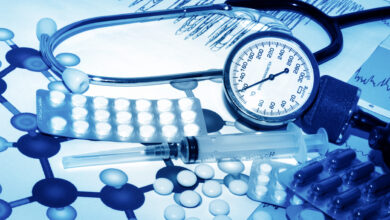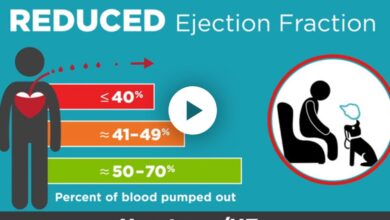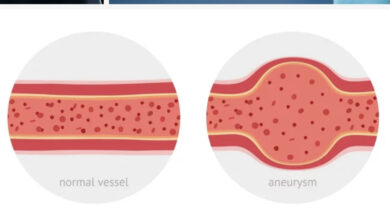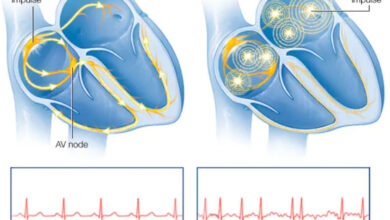CHOLESTEROL: What is it and how does it cause harm?

Everyone has heard of cholesterol. Everyone has cholesterol. Everyone should worry about cholesterol. But what is it, why do we have it, and why and how is it harmful? The development of HMG CoA Reductase inhibitors, better known as statin drugs, has brought cholesterol into the consciousness and conversations of most adults. Most health-conscious people worry about cholesterol and know their cholesterol number. Not only that, they know what their HDL and LDL are, and actively compare their results to their friends and relatives. Having a lower cholesterol than your best friend or sister has become something to brag about.
Cholesterol is commonly thought of as a substance found in fatty foods that, when ingested in excess, accumulates in the blood stream of individuals and is deposited in “plaques” in the arteries. Plaques are the major component in hardening of the arteries. Hardening of the arteries, known as arteriosclerosis, or atherosclerosis to physicians, is just what it’s name implies. Areas within the walls of patient’s arteries become stiff and hardened. These hardened areas reduce the ability of the arteries to expand and contract, and, if they become large enough, plaques impede the flow of blood through the artery. This reduced blood flow is what causes the symptoms patients experience. “Plaques” are made up of blood components called platelets, our “friend” cholesterol, and, in later stages, calcium. So controlling our cholesterol level is very important in preventing arteriosclerosis.
So what actually is cholesterol, what’s it’s purpose in our bodies, and how does it wind up in the walls of our arteries? And what can we do about it?
CHOLESTEROL is a waxy, fat-like substance found in all cells of the body. It is the substance that is required for building and maintaining human (and animal) cell membranes, the protective barrier that surrounds every cell. Without cholesterol, the cell would fall apart, and would be only a mass of fluid. Cholesterol is the main structural component found every human cell regardless of its location or function. It is the “most abundant steroid in humans.” For you nerds out there, it’s chemical formula is C27H46O. The average 150-lb adult will have 140 grams of cholesterol in their body. I said previously cholesterol is a steroid, but technically it is a modified steroid called a sterol, thus the name choleSTEROL.
Cholesterol is stored in the ovaries, testes, brain, and adrenal glands in its sterol form, but is chemically converted to steroid hormones. Therefore, we have another of its major functions: the production of hormones-estrogen and progesterone in the ovaries, testosterone in the testes, and aldosterone and cortisone in the adrenal glands. Cholesterol is the “precursor” required for the synthesis (production) of these hormones.
Cholesterol’s third function is as a precursor to the synthesis of vitamin D, aided by sunshine and exercise, and it also enables the absorption of the fat-soluble vitamins A, D, E, and K.
Digestion is the fourth function of cholesterol. It is essential in the production of bile within the liver cells. Cholesterol is absorbed by the liver cells and is converted into bile acids and bile salts. They are released from the liver through the bile ducts and pass into the gall bladder where they are stored until needed. Bile is then released into the intestinal tract when fatty foods are ingested to facilitate digestion. Digested fats are then absorbed into the bloodstream. Excess dietary fat does not get fully digested but is still absorbed. When the body has more cholesterol than it can handle, cholesterol molecules attach themselves to the inner walls of blood vessels causing arteriosclerosis.
The four main functions of cholesterol, then, are:
- A building block for the structure of human cells-the cell membrane
- The production of hormones
- The production of Vitamin D
- Digestion of fatty foods.
Cholesterol comes in many sub-types. I like to call them the “good,” the “bad,” and the “worse.”
The GOOD: HDL Cholesterol. HDL stands for high-density lipoprotein. It is good because it carries cholesterol from other parts of your body back to the liver. It keeps bad cholesterol away from your arteries and may help to prevent arteriosclerosis. Higher HDL levels are desirable.
The BAD: VLDL Cholesterol. VLDL stands fo very low-density lipoprotein. It’s bad because it contributes to the build up of cholesterol plaques in the arteries.
The WORSE: LDL Cholesterol. LDL stands for low-density lipoprotein. While cholesterol circulates in the bloodstream, LDL causes it to build up in the arteries forming plaques and arteriosclerosis.
Also included in your cholesterol count are TRIGLYCERIDES. Elevated levels are common in diabetics and are linked to heart disease. Obese people who drink excess alcohol and eat a lot of carbs always have high triglycerides. LIPOPROTEIN (a) is a substance containing LDL plus a protein (apoprotein a). “Elevated levels are a very strong risk factor for heart disease.
The lab number patients always talk about, though, is the TOTAL CHOLESTEROL.
NORMAL VALUES for the various types of cholesterol are as follow:
Total Cholesterol: 200 or less is optimal. Above 240 is high risk
HDL Cholesterol: 40 or less is high risk. Above 60 is optimal
LDL Cholesterol: 100 or less is optimal. Above 160 is high risk.
Triglyceride: 150 or less is optimal. Above 200 is high risk.
For diabetics and patients with known vascular disease, target levels are much lower. For example; the target level for LDL is 70 or less for these high risk individuals.
Examples of abnormal blood levels seen in my patients are as follow:
Triglyceride over 8000 in an overweight patient whose diabetes was out of control
HDL of 7 in a diabetic man who died in his 60’s
Cholesterol’s well over 300 and LDL’s over 200 were very commonly seen in my patients
pretreatment.
The blood (serum) of the lady with the 8000 triglyceride was so thick with fat it looked like milk, not blood.
Causes of high cholesterol are numerous.
- High intake of foods with saturated fat.
- Smoking
- Lack of exercise
- Obesity
- Diabetes
- Heredity (you chose the wrong parents)
- Age. Gender-after menopause, women’s LDL levels tend to rise
- Race-African Americans have higher HDL and LDL levels than whites.
Arteriosclerosis is the major problem resulting from high cholesterol, low HDL, and high LDL levels in the blood. It takes many years for arteriosclerosis to develop, but in many patients, it starts as early as their 20’s. Current theory says that damage occurs to the delicate inner lining of blood vessels (the endothelium) from high blood pressure, smoking, and diabetes. Blood cells called platelets stick to the damaged area in an effort to heal it and attract bad cholesterol (LDL) which gradually accumulates and causes an inflammatory response. The inflammation attracts a certain type of white blood cells which attract more cholesterol, and the process repeats itself. Eventually, the “plaque” containing platelets, cholesterol, and white blood cells, gets larger and “heals” by calcifying. When these plaques get large enough they either impede blood flow over them or break loose (rupture) and flow downstream until they can go no farther. When blood cannot get past the blockage, the tissue beyond the blockage dies (infarcts) due to lack of oxygen and nutrients. This is what happens in heart attacks (myocardial infarction) or strokes (cerebral infarction).
This theory of the development of hardening of the arteries is supported by many investigators and many studies, and has held up over the years. It is felt that not only do statin drugs prevent arteriosclerosis by lowering total cholesterol and raising HDL, they may also have a beneficial anti-inflammatory effect as well. Inflammation plays a big role in cholesterol plaque formation.
Treatment of high cholesterol in detail is a topic for another article and will be addressed later. The numerous options for lowering total cholesterol, especially statin drugs, are very effective and have significantly reduced heart attacks and sudden cardiac death. But unfortunately, people still get hardening of the arteries, still have heart attacks and strokes, and still drop dead. So the problem is bigger than cholesterol alone. Genetics, cigarette smoking, and high saturated fat diets are major factors, but it’s still not known why two people with the same risk factors, cholesterol numbers, and lifestyle have completely different health outcomes. It’s a mystery that may never be solved.
Dr. G’s Opinion: Cholesterol, like so many other things associated with the human body, has both beneficial and harmful effects. You need some to live, but too much can have dire consequences. The bad effects get far more attention than the good and justifiably so because of their implications for quality of life. In my opinion, lowering one’s cholesterol is second only to smoking cessation. Besides genetics, high cholesterol and smoking are the worst risk factors for heart disease patients patients face. So anything one can do to lower cholesterol should be done. Information about treatment options for lowering cholesterol will be in a future article.
References: webmd.com/cholesterol-Management
MedLine plus.gov/cholesterol-levels
healthline.com/health/high-cholesterol/levels




